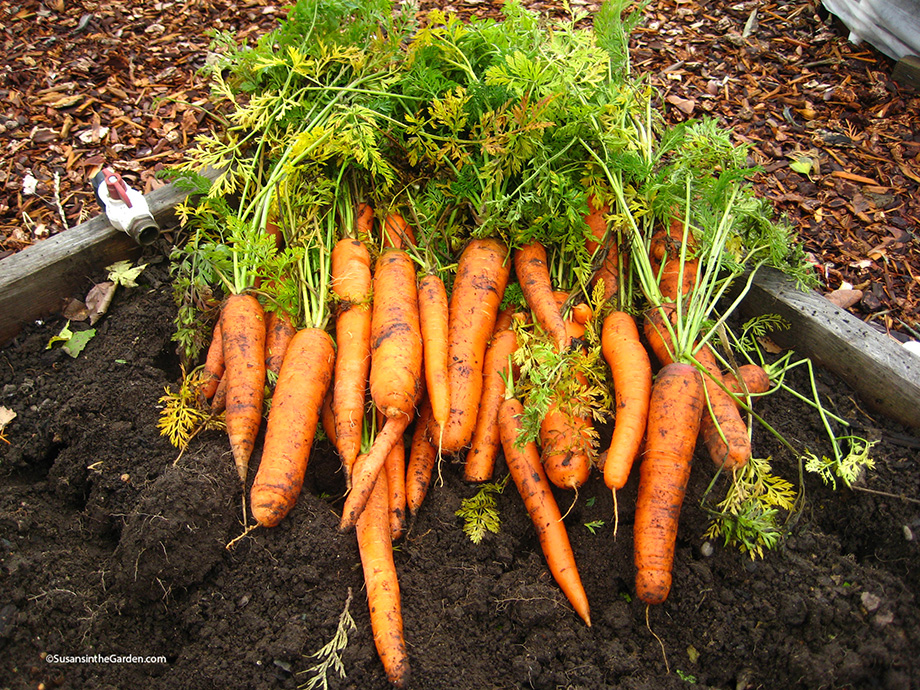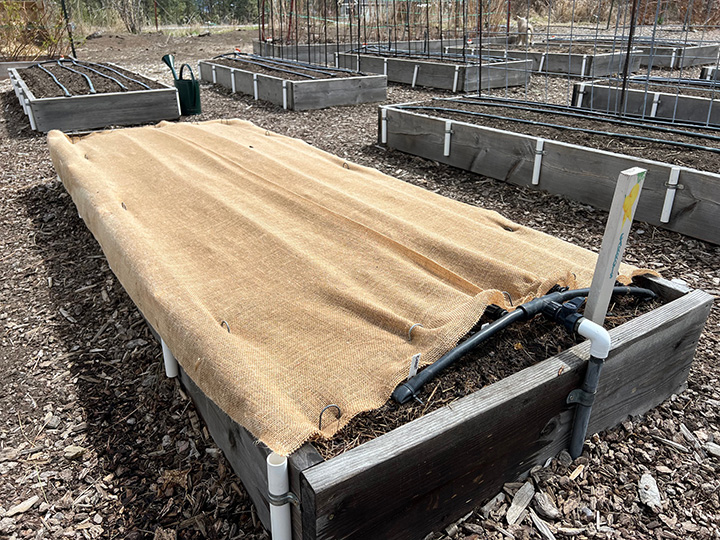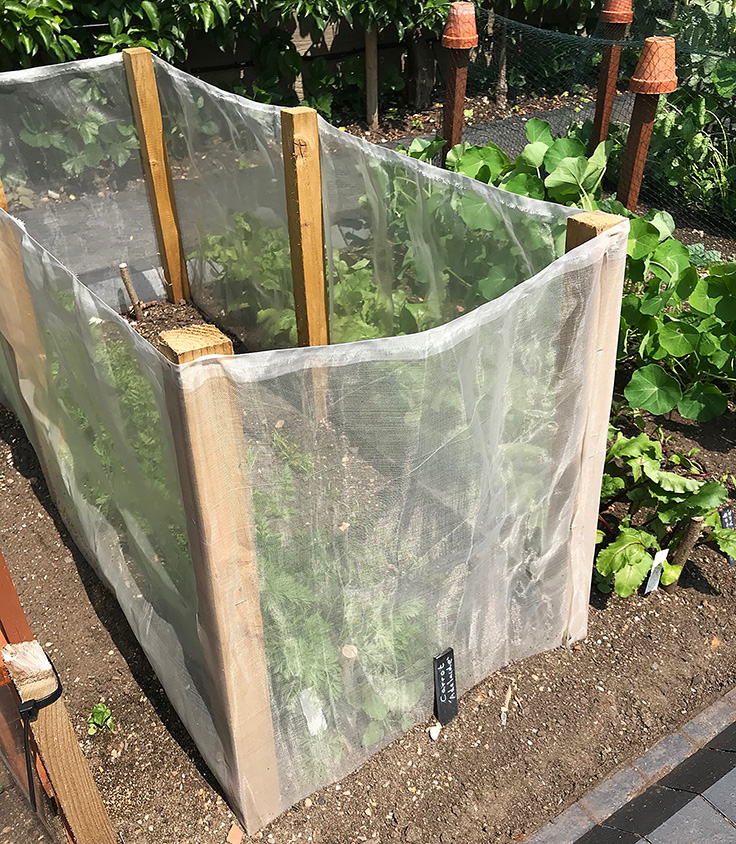How to Grow Carrots

I love to grow carrots. The most important things you need to know for success are bonemeal and correct spacing. Find out the details below!
Latin Name: Daucus carota
Plant Family: Carrot (Apiaceae)
Cool-season crop
Did You Know?
Carrots date back at least to the 10th century in the regions of Persia (Iran) and Asia Minor. The roots were originally either purple or white. A later mutation produced yellow carrots, from which our familiar orange carrots developed.
Plant Seeds or Seedlings? To grow carrots, sow seeds directly in the garden for best results. That’s because the carrot roots do not like to be disturbed, which would impact their growth.
When: In early spring as soon as the soil can be worked, or throughout the season.
Days to Germination: 14 to 21 days
Depth to Sow: 1/4 inch
Spacing: Sow seeds 1/2 inch apart. Later space seedlings 3-4 inches apart. Space rows 8 inches apart.
Days to Maturity: 55 to 70
Cultural Information to successfully grow carrots:
While preparing seedbed, mix some bonemeal into the top 3 inches of soil. Be sure to use the amount recommended on the package. Do not add high-nitrogen fertilizers as this will cause carrot roots to split. When sowing the seeds, space rows 8 inches apart and use the “board method” to increase germination rates. To do this, plant the seeds as directed and water them in. Cover each row with a scrap 2×4 or 1×4 piece of lumber for a week. Remove the boards and watch for the seeds to emerge about a week later. The purpose of the boards is to prevent the soil from forming a crust, thus making it easier for the seedlings to emerge (see photo above left).
The burlap method (see photo below) is an alternative to the board method. Watch my video to see exactly how I do this. Plant the seeds, water them in. Cover the bed with a sheet of burlap (pin it in place so it won’t blow off). Remove it 7-10 days later. When plants are 3 inches tall, it is absolutely crucial to thin them 3 to 4 inches apart so they room to form good roots. Water them regularly and weed as needed.
Susan’s Picks: ‘Scarlet Nantes’, ‘Danvers Half Long’, ‘Dolciva’, ‘Purple Haze’, ‘Red Core Chantenay’
Potential Insect Problems: Carrot rust fly. If this insect is a problem in your area, surround the planting with a barrier that is at least 24 inches tall. The flies are unable to fly that high, so they won’t be able to get to your plants. (see photo to left)
When to Harvest:
Carrots can be harvested at all sizes throughout the season. If the plants go through a few frosts in the fall, the roots have a sweeter flavor. You might require a shovel or spade to harvest your carrots. Be careful not to accidentally cut into them since damaged carrots don’t store well.
How to Cook & Preserve:
Carrots are wonderful no matter how you prepare them. Eat them fresh, steamed, chopped and added to soups, stews or casseroles. Add freshly grated carrots to cakes, cookies, muffins and sweet breads. To preserve carrots, there are three options. 1) Place them in layers inside bins that have been filled with lightly-moistened straw. Put the bins in a cool, dark location such as an unheated garage or root cellar. 2) Chop the carrots, blanch for 2 minutes, plunge into ice-cold water, and freeze them for later use. 3) Can them in jars using the pressure canning method (due to their low acidity). Do NOT use the water-bath canning method!
My Videos About Growing Carrots:
- Grow Peas & Carrots
- How to Grow Carrots, Beets & Parsnips
- Harvest Potatoes, Carrots & Beets
- Plant Broccoli & Carrots
- How to Plant Cool Season Crops
- How to Thin Vegetable Seedlings
Copyright: Susan Mulvihill, Susan’s in the Garden, SusansintheGarden.com




